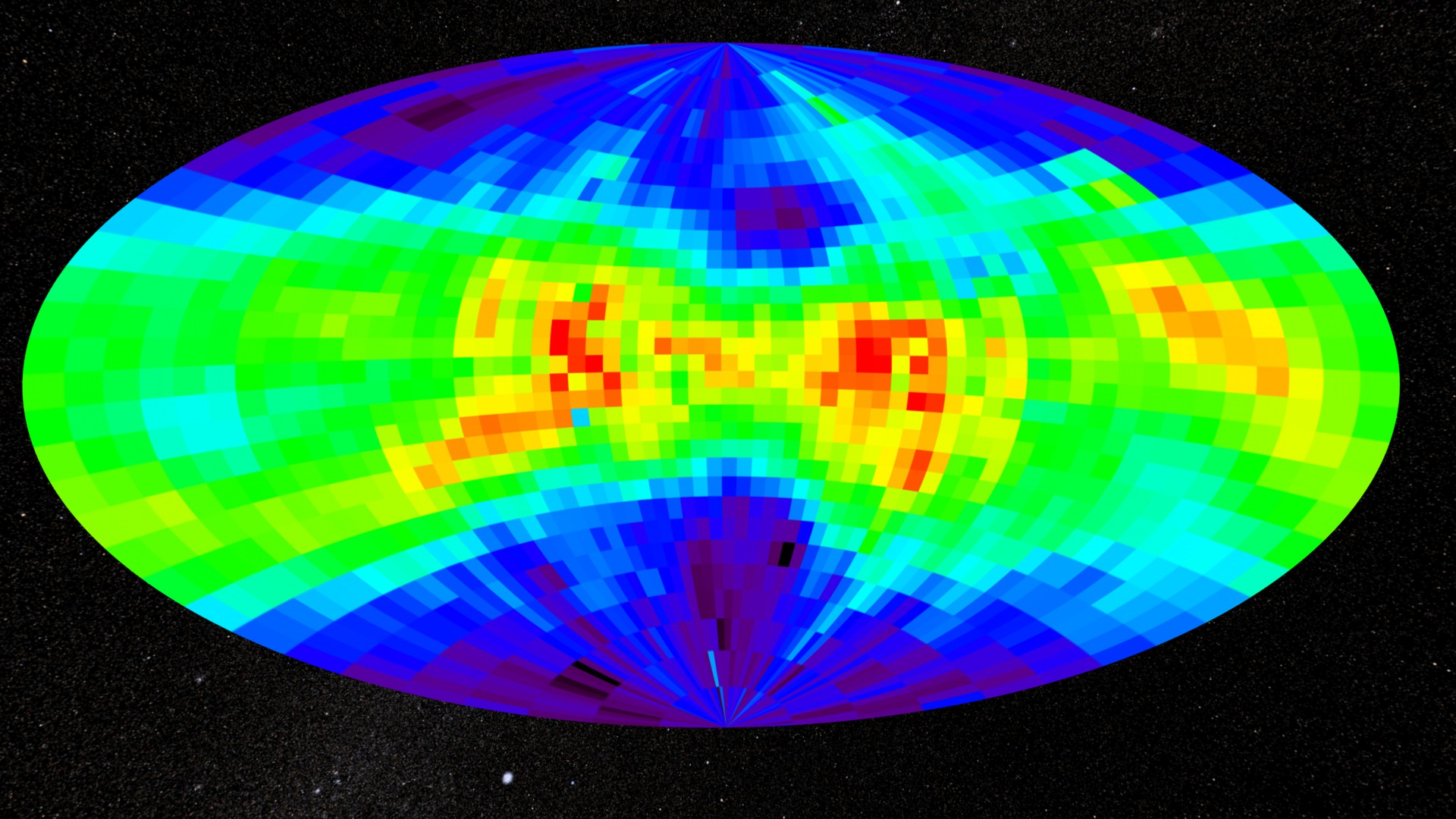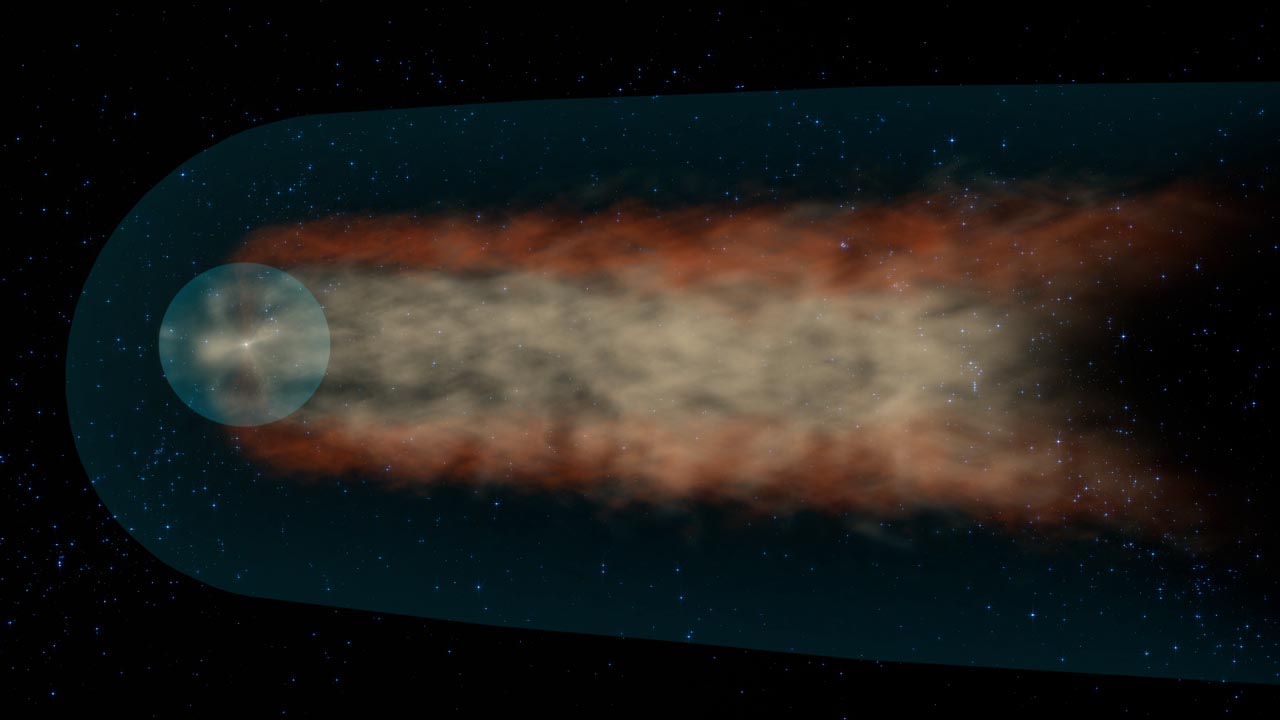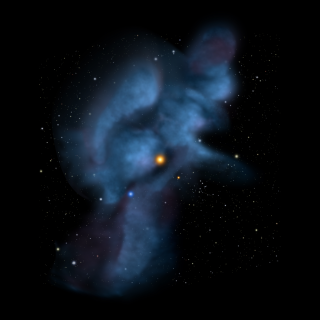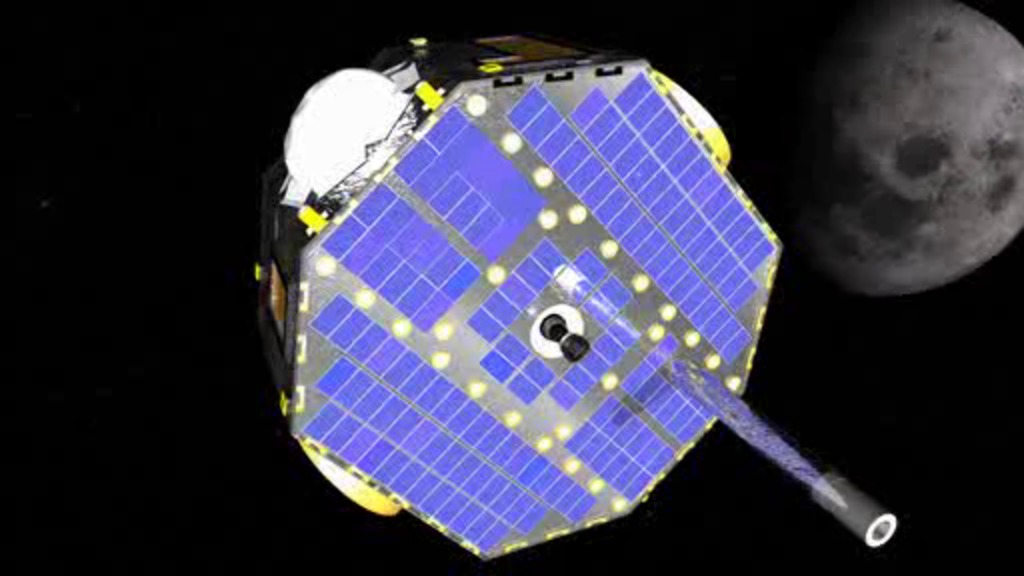IBEX Provides First View Of the Solar System’s Tail
This page contains resources from the July 10, 2013 media briefing.
To watch the media briefing on YouTube, click here.
To view the web short on YouTube about this story, click here.
NASA’s Interstellar Boundary Explorer, or IBEX, recently mapped the boundaries of the solar system’s tail, called the heliotail. By combining observations from the first three years of IBEX imagery, scientists have mapped out a tail that shows a combination of fast and slow moving particles. The entire structure twisted, because it experiences the pushing and pulling of magnetic fields outside the solar system.

High resolution still from animation of the heliotail - front view
Credit: NASA

High resolution still from animation of the heliotail - side view
Credit: NASA

Comet Hale-Bopp.
Credit: NASA

An artist's concept of our heliosphere, which is a bubble in space created by the solar wind and solar magnetic field.
Credit: NASA

The conditions necessary to make the heliosphere, namely the balance of an outward pushing stellar wind and the inward compression of surrounding interstellar gas is so common, that perhaps most stars have analogous structures, called astrospheres. Photographs of three such astrospheres are shown, as taken by various telescopes.
Credit: NASA/ESA/JPL-Caltech/GSFC/SwRI

Animation showing Heliotail solar winds.
Credit: NASA
This asset is available on another page. To view or download it, click here.

This animation shows a charged solar particle's path leaving the sun, while following the magnetic field lines out to the heliosheath. The solar particle hits a hydrogen atom, stealing its electron and becoming neutral. We then follow it until we see it hit one of IBEX's detectors.
This asset is available on another page. To view or download it, click here.

This graph depicts the fraction of high energy cosmic rays (greater than 100 MeV) that pass through the boundary of the solar system. 100% of them are present outside of the Bow Shock. There is a small dropoff in the number that make it through to the heliopause. More than 50% are stopped between the heliopause and termination shock, which is at approximately 100 AU. This leaves a fraction less than 25% to permeate to the inner solar system.
Credit: Adler Planetarium/Chicago

This movie shows images and data from the NASA Explorers Program since the first one Explorer 1 in 1958, through the nobel prize winning COBE, to the newest one to be launched, IRIS. The Explorers Program is the oldest continuous program in NASA . Explorers are one of three flight programs within the Heliophysics portfolio and provide frequent spaceflight opportunities for world-class science investigations for a relatively modest cost.
This asset is available on another page. To view or download it, click here.
![IBEX observations of spectral slope, where red and yellow indicate lower energy particles and green and blue higher energy ones. The central portion (circle) is looking down the heliotail and shows two lower energy "lobes" on the port and starboard sides and high energy regions at higher northern and southern latitudes. Figure taken from McComas et al. [ApJ, 2013]. IBEX observations of spectral slope, where red and yellow indicate lower energy particles and green and blue higher energy ones. The central portion (circle) is looking down the heliotail and shows two lower energy "lobes" on the port and starboard sides and high energy regions at higher northern and southern latitudes. Figure taken from McComas et al. [ApJ, 2013].](/static/svs/images/no_preview_web_black.png)
IBEX observations of spectral slope, where red and yellow indicate lower energy particles and green and blue higher energy ones. The central portion (circle) is looking down the heliotail and shows two lower energy "lobes" on the port and starboard sides and high energy regions at higher northern and southern latitudes.
Figure taken from McComas et al. [ApJ, 2013].
![Schematic diagram of heliotail as the interstellar magnetic field that surrounds our heliosphere squeezes and rotates the tail structure as seen in the IBEX observations. Figure taken from McComas et al. [ApJ, 2013]. Schematic diagram of heliotail as the interstellar magnetic field that surrounds our heliosphere squeezes and rotates the tail structure as seen in the IBEX observations. Figure taken from McComas et al. [ApJ, 2013].](/static/svs/images/no_preview_web_black.png)
Schematic diagram of heliotail as the interstellar magnetic field that surrounds our heliosphere squeezes and rotates the tail structure as seen in the IBEX observations.
Figure taken from McComas et al. [ApJ, 2013].

The solar journey through space is carrying us through a cluster of very low density interstellar clouds. Right now the Sun is inside of a cloud that is so tenuous that the interstellar gas detected by IBEX is as sparse as a handful of air stretched over a column that is hundreds of light years long. These clouds are identified by their motions. Labels.
Credit: NASA/Adler/U. Chicago/Wesleyan
Credits
Please give credit for this item to:
NASA's Goddard Space Flight Center
-
Animators
- Michael Lentz (USRA)
- Walt Feimer (HTSI)
- Tom Bridgman (Global Science and Technology, Inc.)
-
Producer
- Genna Duberstein (USRA)
-
Scientists
- Dave McComas (SwRI)
- Eric Christian (NASA/HQ)
- Nathan Schwadron (University of New Hampshire)
Release date
This page was originally published on Wednesday, July 10, 2013.
This page was last updated on Monday, January 6, 2025 at 1:27 AM EST.



